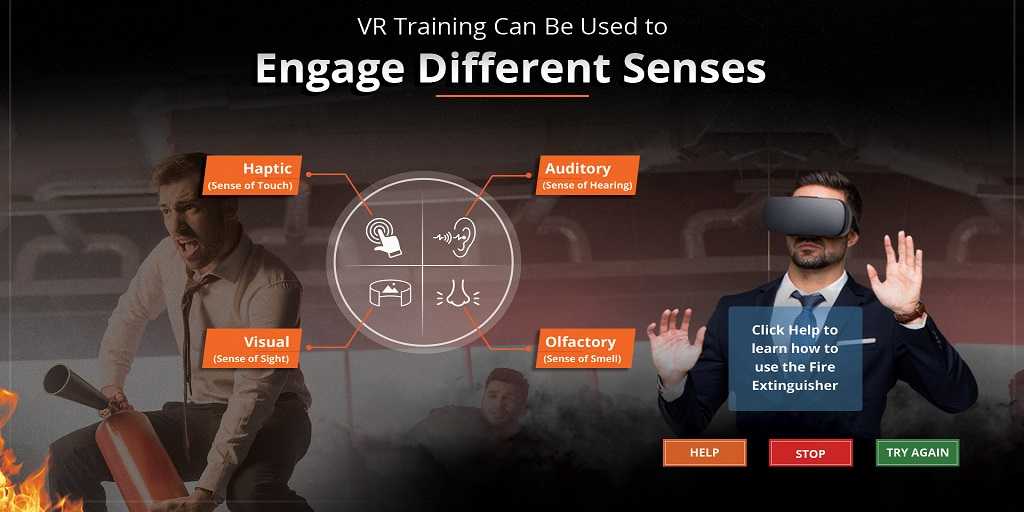Considering the new normal, with most employees working from home, Virtual Reality (VR) is fast being considered an apt modality for training that requires presence in-situ at a particular location.
We have evidence to prove this:
- Millennials constitute a significant part of today’s workforce. The latest research by Penn Schoen found that 82% of millennials prefer jobs with high-tech workspaces.
- In 2020, almost one in five US consumers (19%) used VR—three percentage points higher than 16% in 2019 (AR Insider, 2020). Most users were delighted about the experience with 55% being extremely or moderately satisfied.
Apart from the novelty and fun element of being mentally transported to a new reality, VR also works deeply at the cognitive level to facilitate experiential learning.
Considering that VR allows a learner to be someone, somewhere else, or to participate in a situation different from their current reality, it can be used perfectly to apply the psychological principles of positive and negative reinforcement, and punishment and reward.
Positive reinforcement is the most powerful way to teach an individual a new habit. A beneficial stimulus is applied to improve an action in positive reinforcement. To increase an action, an unfavorable stimulus is eliminated in negative reinforcement. Car manufacturers for example, use negative reinforcement rules in their seatbelt schemes, that makes a beeping sound until your seatbelt is fastened. Think of positive reinforcement as a reaction from the environment encouraging a learner to continue doing something, and negative reinforcement as a trigger to coerce the learner to do something they need to do in a situation.
Many people mistake negative feedback with punishment in operant conditioning, but they are two very separate processes. Remember that reinforcement, including constructive reinforcement, often strengthens an action. In contrast, punishment always decreases a behavior. Positive punishment involves the addition of an unfavorable trigger to reduce a conduct. Scolding a worker to get them to avoid being distracted while using a high-risk machine is an example of constructive punishment. In this case, a stimulus (the reprimand) is used to reduce the action (distraction while operating the machine). Negative punishment involves removing a pleasurable stimulus to reduce an action; for example, confiscating an employee’s mobile phone to avoid distraction while working on a machine.
Keeping these principles of cognitive psychology in mind, VR is highly recommended for training in various industries where workplace health and safety hazards exist.
Because not adhering to stringent compliance standards can lead to a enormous loss to such industries. The best approach would be allowing the students or users to adopt a particular perspective in VR training, leading to a specific outcome. For example, using a match or lighter within the premises of a petroleum plant can have dangerous consequences. By allowing a learner to experience these consequences, positive and negative reinforcements, and punishment can be utilized to imprint the correct actions via the virtual experience.
In the medical technology industry, medical practitioners can learn skills to perform hands-on medical procedures in tandem with medical technological devices. Think of a situation where a CCU (Critical Care Unit) Nurse needs to take a reading from a newly installed device, observe symptoms in a patient, and perform a procedure accordingly. Is it ideal having a nurse learn and practice on an actual patient, or in a simulated virtual environment where mistakes can be learned from without any drastic repercussions?
Furthermore, in the aerospace industry, sizeable amounts of money are spent on pilot practice sessions; VR can step in as a safer and cheaper option.
Disaster management teams could get hands-on experience in dealing with a raging fire without actually being in that situation.
Virtual Reality is an excellent tool to equip learners with hands-on competencies for a high-risk situation. Adequate practice in an immersive virtual case can assist employees by being prepared to apply skills which they may not be able in an actual high-pressure situation they have not yet faced in reality.
It is up to the designer to work closely with the client’s subject-matter experts to work out the details regarding how a scenario will change, based on the learner’s interaction with it, the actions the learner needs to perform, and the outcome of those choices. Virtual Reality may not be the best modality for all training, but it is certainly the preferred choice to empower learners with skills that will prove to have a long-lasting, considerable and positive impact in a moment of crisis.
Note: If you think Virtual Reality training can burn your budget, then please have a look at this infographic, which explains how to Create a VR Based Learning at the Price of an E-learning Course.









